OK, I’m thoroughly confused…
Having not grown up around motorcycles, I’m not up to speed on a lot of motorcycle history. Consequently, when Harley-Davidson  unveiled its new “Milwaukee-Eight” engine this week, it got me wondering about the power-plants that had preceded it.
unveiled its new “Milwaukee-Eight” engine this week, it got me wondering about the power-plants that had preceded it.
While I was aware of some of the names (Knucklehead and Shovelhead, for instance), I certainly couldn’t name them all. In the press release announcing the Milwaukee-Eight, Harley-Davidson reported that it’s “the ninth Big Twin in its history.” What the release inexplicably lacked was any disclosure of what the other eight engines were.
A Google search was called for, and that’s when I got confused. What does Harley-Davidson consider to be a Big Twin? Does the list include the liquid-cooled Revolution engine that was in the V-Rod that I once owned? And what about engines that had different generations, such as the Twin Cam 88 and Twin Cam 96? Were they considered the same engine with just different displacements?
To try and clear up the matter, I then emailed a PR contact at Harley-Davidson and she responded with a list from Wikipedia that included the F-head, Flathead, Knucklehead, Panhead, Shovelhead, Evolution and Twin Cam engines.
That’s fine, except I count seven engines on that list. Add the Milwaukee-Eight and that’s a total of eight engines over Harley-Davidson’s long history – not nine as the press release for the Milwaukee-Eight stated, unless the Revolution engine is counted.
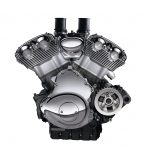
I then went to Harley-Davidson’s website, began digging into the company’s history and learned the following about engines and when they were introduced:
The first V-twin engine was unveiled in 1909 and it wasn’t until 1929 that Harley-Davidson released what seems to me to be the initial Big Twin. It was known as the…
1. Flathead
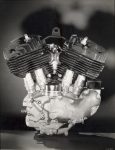
It was a 45 cubic inch, side-valve engine and first appeared on the D model. It lasted in different variations until 1972.
Then again, the PR person’s list included the F-head, so maybe the Flathead wasn’t the first.
Next came the…
2. Knucklehead
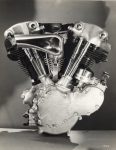
The name came from the shape of the engine’s rocker boxes. It was introduced in 1936 on the EL model.
Next up was the…
3. Panhead
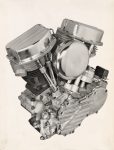
Introduced in 1948, it had a aluminum heads and hydraulic valve lifters. It also had one-piece, chrome-plated rocker covers shaped like cake pans, hence the name.
In 1957, Harley-Davidson came out the Ironhead engine for the Sportster. Is this considered a Big Twin? Is this the missing link on the list? Damned if I know.
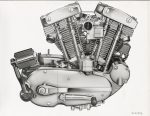
I do know that the Panhead was superseded by the…
4. Shovelhead
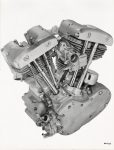
This engine came out in 1966 and was used on Electra-Glide-models. It had redesigned “power pac” aluminum heads, which generated 10 percent more horsepower.
The shape of the combustion chambers gave the engine its nickname. It lasted through 1983.
Then came the…
5. Evolution
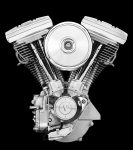
Released in 1984, it boasted 1,340cc and was used on five models. The engine produced more power at every speed and ran cooler, cleaner and oil tight. More than one million were built.
It got bumped by the…
6. Twin Cam 88
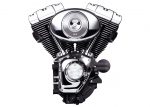
It was introduced in 1999 on the Dyna and Touring models. It had 88 cubic inches or 1,450cc. It was the largest engine that Harley-Davidson had ever offered.
So, depending whether you count the Ironhead or not, that’s either six or seven engines. Add in the Revolution engine, which was unwrapped in 2001 in the 2002-model year V-Rod, and that’s either seven or eight engines leading up to the Milwaukee-Eight.
But, wait, I missed the F-head that was included on the Wikipedia list that the PR person emailed me. As mentioned previously, the F-head came out in 1909. Factor it in and the engine total leading up to the Milwaukee-Eight is eight or nine.
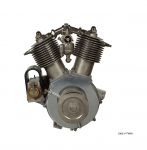
So why I’m so confused? I do know that if I were a Harley-Davidson engine, I’d have to be named the Fathead.
Thankfully, I’m not the only one trying to sort out this issue.
“Motorcyclist” magazine did an online story that shows eight – not nine – engines. The website RideApart also tried to sort it out in a story.
If anyone can clear this mystery up for me, I’d appreciate it.
 Ride CT & Ride New England Serving New England, NYC and The Hudson Valley!
Ride CT & Ride New England Serving New England, NYC and The Hudson Valley!

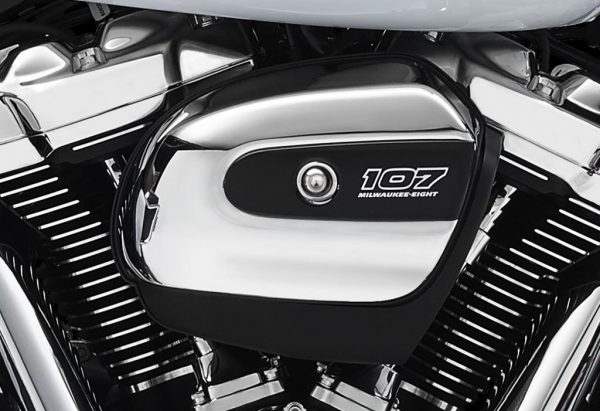
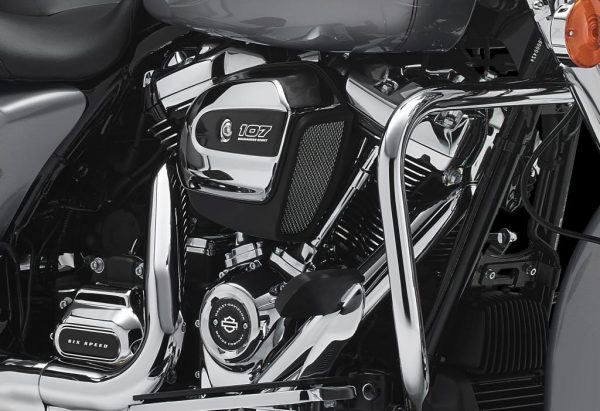

Hey, Bud! Arguably two F-head big twins (inlet over exhaust valve ). First denoted as model 10 in production from 1911 to 1914, at around 61 cubic inches (1000cc). Then the Model 11 redesign in 1915 which ran thro F and J models til around 1929. The 45 cube D model would not have been included as a big twin, neither would the sportster. The first big twin Flathead would have been the V series from 1930. Then, knuckle (first ohv), pan, shovel, evo, twin cam, revolution and new one . How many’s that? Ten?